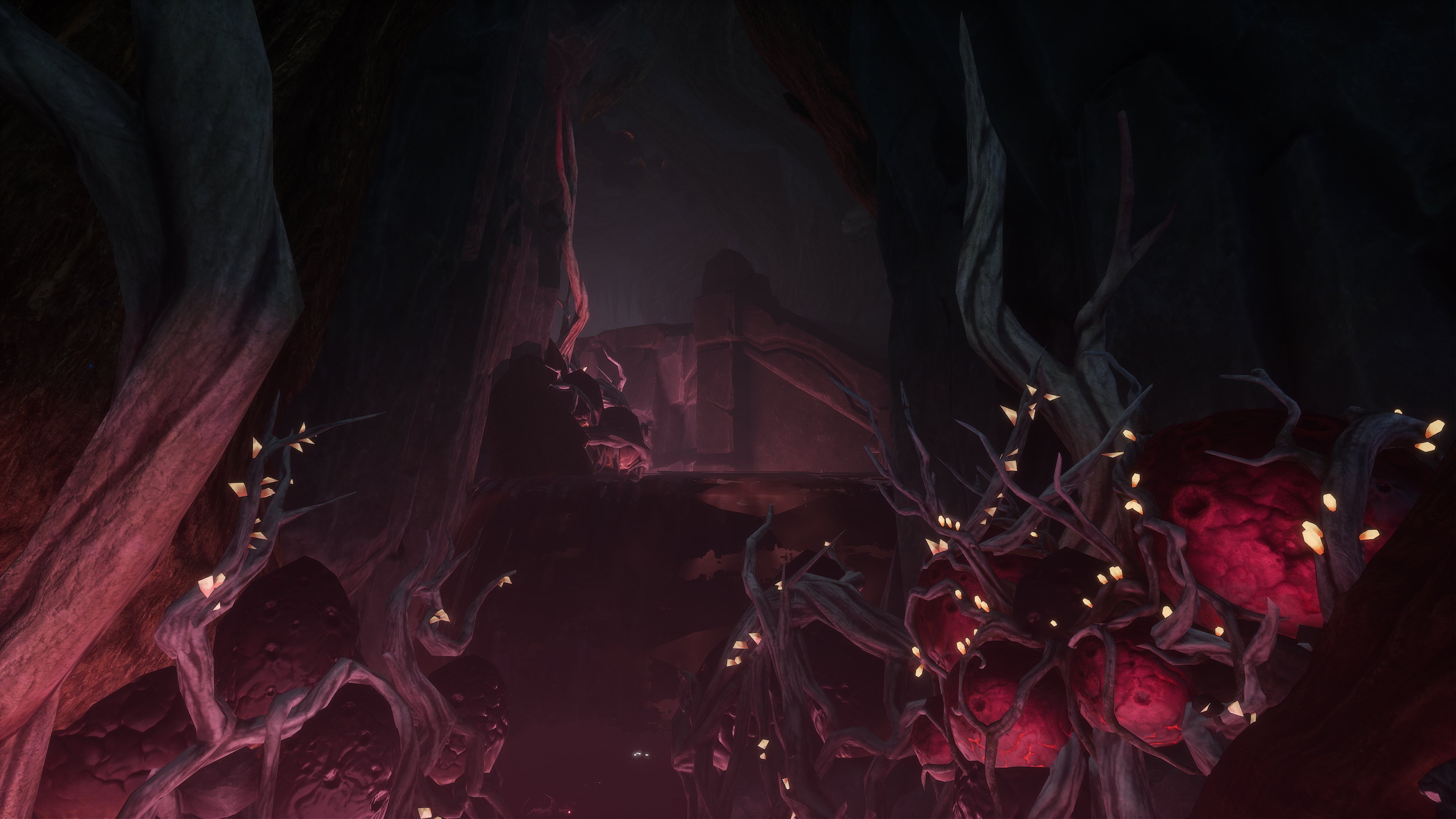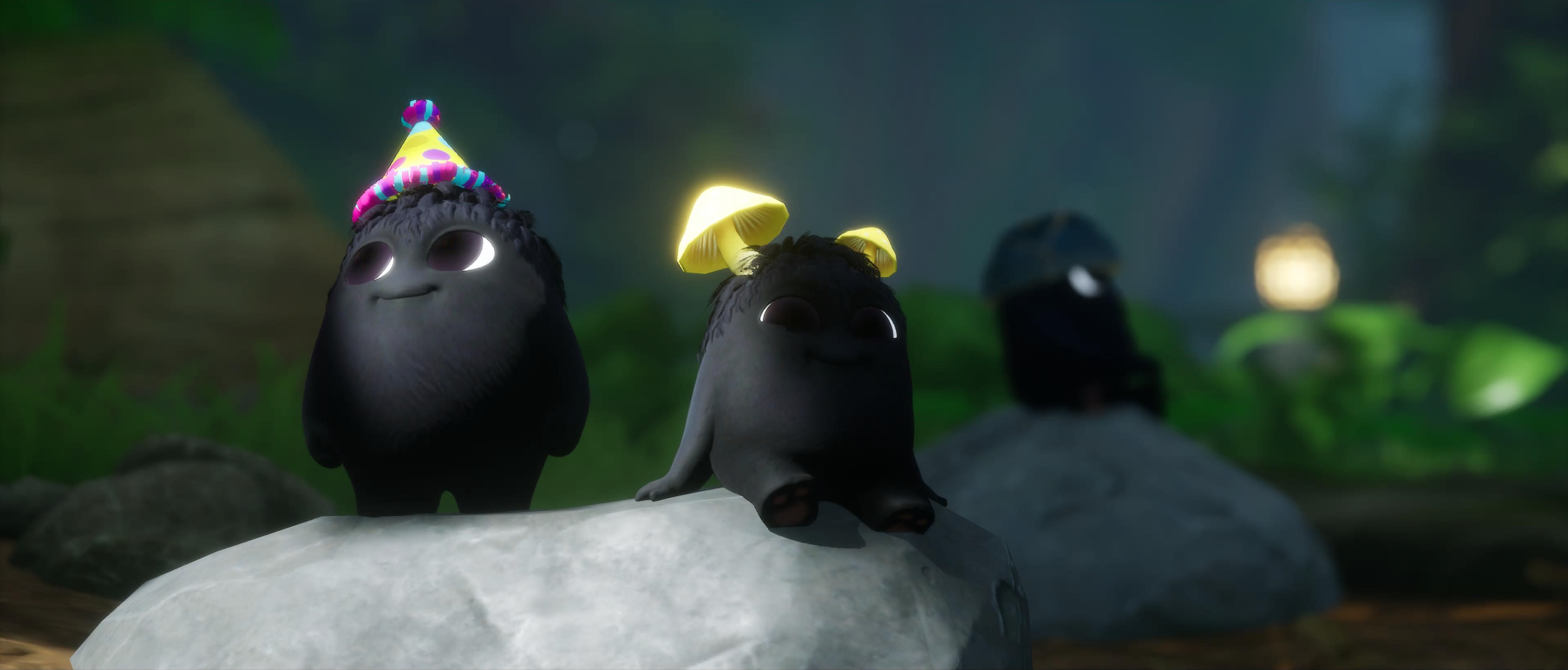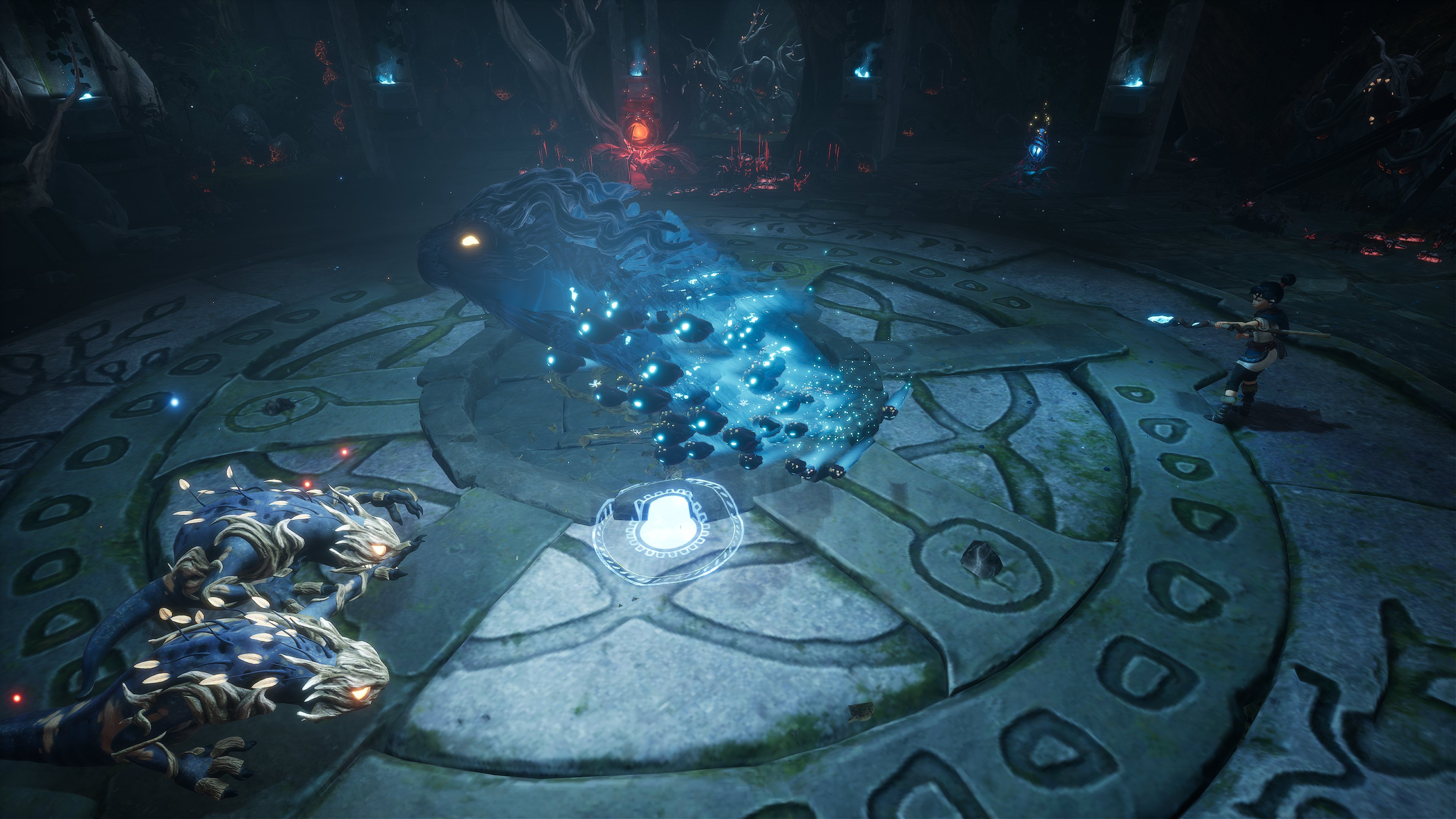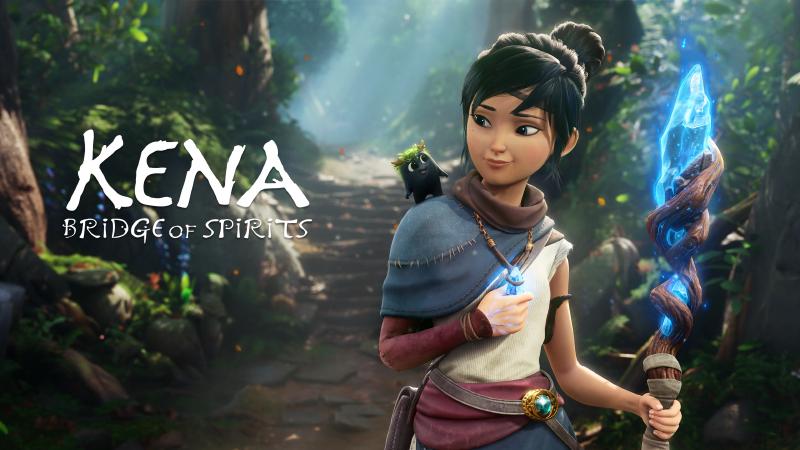A deceptively hopeless and tragic world guised by its own Dreamworks quality and cute creatures. Kena is a little treasure but suffers with a lack of meaningful collectibles and narrative incentive that take away from the experience leaving you side-tracked for hours without progression.

The game tells the story of Kena, a young spirit guide on a journey through a land torn apart by corruption as she uses her powers to send the lingering spirits of this hopelessly spoiled and fundamentally broken island move on… The unfortunate thing is that Kena as a main character doesn’t really get more complex than that and is almost totally overshadowed by the minimal supporting cast that better provide the lore and personality that she lacks. In fact, Kena’s story doesn’t truly come to light until the latter stages of the game and is somewhat left to the imagination of the player. It’s a surface-level narrative that left me retroactively bored and uninspired by the whole premise. It feels more like this game as a whole was made as a tech demo for things to come.

Kena at its core is inspired by Japanese spirituality and symbolism. Across the island you’ll find references to Jizo statues that protect travellers on their journeys, Inari (Fox) statues that are often depicted as signs of prosperity/messengers and Fukuru (Owl) statues who protect from suffering (This one being the most relevant and yet largely underused). Fans are sure to find more references but these are what I found in my short time.

Visually, the game is an animated delight (outside of its juddering locked 24fps cutscenes) reminiscent of the Dreamworks studio aesthetic right down to the cute Rot creatures that share the same colour palette of Toothless. The light and vibrant images of the simplistic Japanese countryside and musical score belies the dark and heavy themes that err on the realm of unsettling. Even the more jovial scenes perturb once you understand how damaged the island truly is – making you feel for the tragic loss of this once peaceful and prosperous island.

The darker and more threatening sections of the game however is where Kena personally excelled for me both visually and as an interactive medium. Momentary excursions through Zelda-esque “dungeons” and caves where small puzzles provide the bulk of your time and labour proved to be the most immersive as I slid down shattered walls, dived into the shallow pools and evaded traps compared to the open world collect-a-thon above ground.

Red Lotus-like blooms present themselves as the main obstacle throughout the game and Kena has the power to purify and remove these corrupted blooms, but it always felt like a wasted effort on her part. Outside of the village and main story there are no spirits to help move on or give any closure for. It seemed more like an added diversion to flesh out the already short gameplay experience. The world is fundamentally in tarnishes, no matter how much the land heals, the island is dead – the houses are ruined, the people are long deceased and there’s seemingly little hope for a happy ending in this world, all that remains is the Rot. You could say this is a metaphor for our own world to be better caretakers before it’s too late.

The saving grace for the entire experience for me was the adorable little creatures that serve as a growing mechanic for combat and puzzle solving. Finding more as you progress unlocks new abilities for Kena and adds to the ever-growing train of customisable cuteness that follow your every move with all manner of “hats” and masks to match their size. Which leads to my next point.

Throughout the game you’ll be expected to backtrack as more areas open up to you and find more Rot, cursed chests that act as challenge encounters, meditation spots to increase health and treasure chests. However, the value of these chests and the currency you find hidden in the world is underwhelming to say the least. You accrue so much (especially as a completionist like myself) that it becomes a redundant chore to continue past affording what hats and masks you want for your little friends. I bought 2 of everything I could and still had thousands left to spend…. On nothing.

This overabundance of currency also extends into the skill upgrade points known as Karma. Around 75% into the game I had unlocked all of Kena’s skills and was earning more Karma than I knew what to do with. It made hunting for collectibles all that more redundant. Luckily because the game is so short it doesn’t take too long to do it all… but still laborious.

Combat is a tried-and-true makeup of light, heavy and ranged attacks but where the rot are usually scared of the malevolent manifestations of the corruption, Kena gives them courage and as she fights off the corrupted, the Rot will build their own expendable units to unleash support-based attacks to hinder single targets, increase damage with special attacks or heal Kena with health pickups. It’s a simple construct but my main gripe with the combat is the guard button and your inability to cancel your actions to “bubble up” and react to oncoming attacks despite whatever button you’ve just pressed – the higher difficulties frustratingly highlight this fundamental flaw and takes away the reactive dynamic of combat.

The game is very unforgiving with your inputs and will perform every animation linked to your button press before the next. This means that even if you press guard at the end of a heavy attack combo, you have to wait for Kena to reset back to a neutral state before the guard goes up. It leads to a number of frustrating deaths. Even the dodge roll suffers from some annoying biased - enemy attack swings can unrealistically slide into range if you try to evade when you are supposed to guard as punishment. To add insult to injury, the guard ability has its own health and if you abuse it will leave you vulnerable as well as receiving fatal “chip” damage from stronger enemy attacks.

For every good thing Kena does, there’s something not so great to go with it. Overall, I enjoyed the game and the deceptive themes of its surface level cuteness but I fear it will fall flat for many especially in its storytelling.
